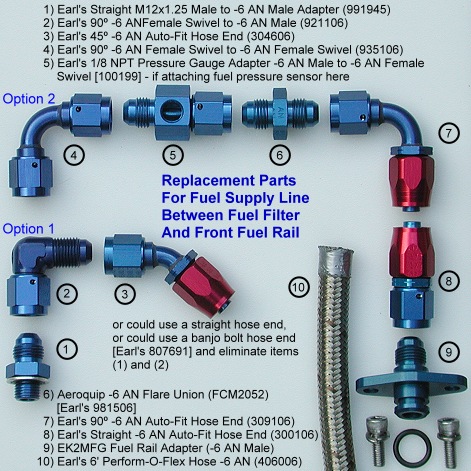
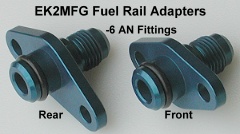 Before begining this project you will need to purchase a set of fuel rail adapters from EK2MFG (Bob Koch). Bob has these adapters built to his specifications and anodized. He sells them on eBay as seller jckbkoch. You can also buy them direct from him by email at ek2mfg@comcast.net or at his web site http://www.ek2development.com/. Even a quick glance at Bob Koch's fuel rail adapters shows that these are little jewels. They are carefully and precisely crafted, and are anodized to a color blue similar to typical AN fittings. They also fit perfectly onto the ends of the fuel rail and do not leak when installed correctly. These fuel rail adapters make it simple to replace the factory supply and return fuel lines and the crossover pipe with aftermarket hoses and pipes that utilize AN fittings at the rail ends. The "front" and "rear" annotations in the picture refer to the supply and return side of the rails (where we will be working). Reverse the annotations for the crossover pipe side of the rails. The adapters come with o-rings, 1/4" split spring washers, and M6x1 socket head cap screws.
Before begining this project you will need to purchase a set of fuel rail adapters from EK2MFG (Bob Koch). Bob has these adapters built to his specifications and anodized. He sells them on eBay as seller jckbkoch. You can also buy them direct from him by email at ek2mfg@comcast.net or at his web site http://www.ek2development.com/. Even a quick glance at Bob Koch's fuel rail adapters shows that these are little jewels. They are carefully and precisely crafted, and are anodized to a color blue similar to typical AN fittings. They also fit perfectly onto the ends of the fuel rail and do not leak when installed correctly. These fuel rail adapters make it simple to replace the factory supply and return fuel lines and the crossover pipe with aftermarket hoses and pipes that utilize AN fittings at the rail ends. The "front" and "rear" annotations in the picture refer to the supply and return side of the rails (where we will be working). Reverse the annotations for the crossover pipe side of the rails. The adapters come with o-rings, 1/4" split spring washers, and M6x1 socket head cap screws.

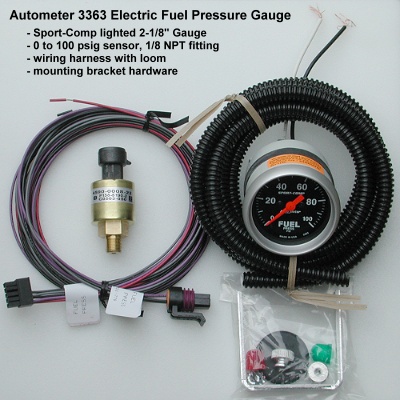
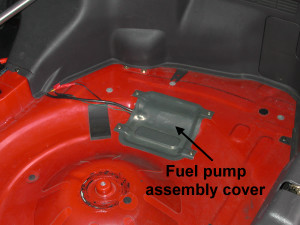
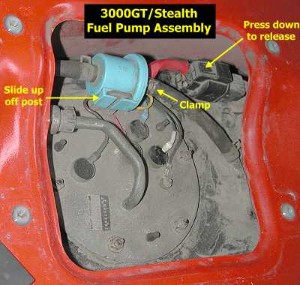
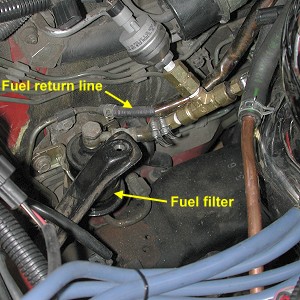
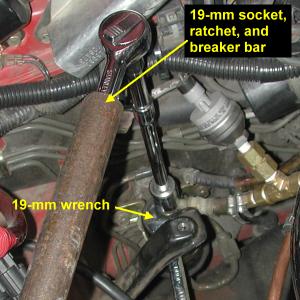
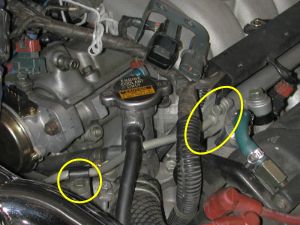

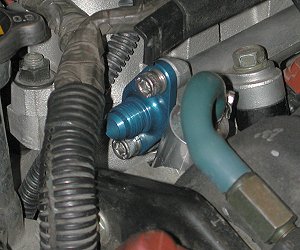
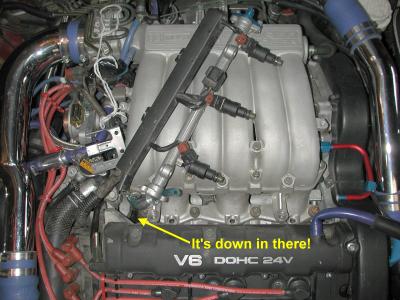
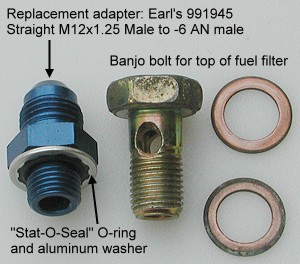
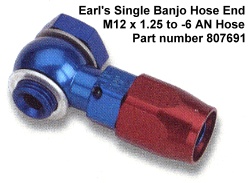
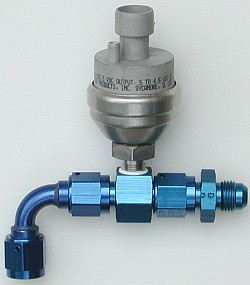
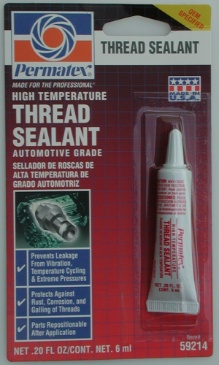

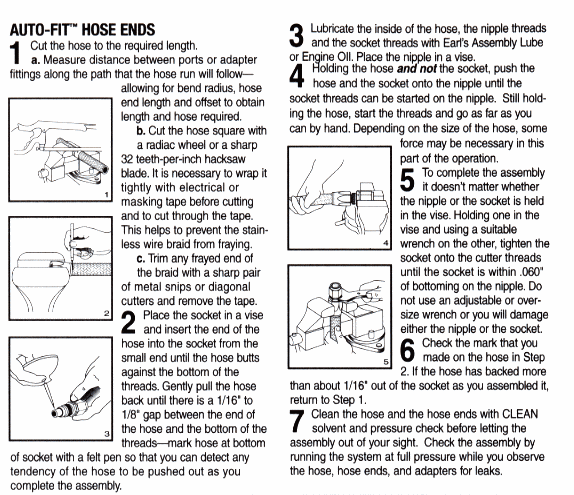
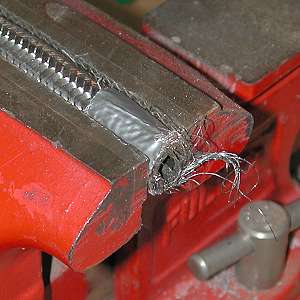
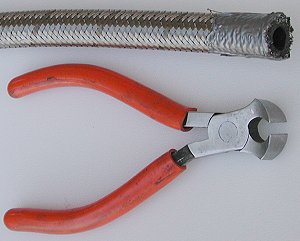
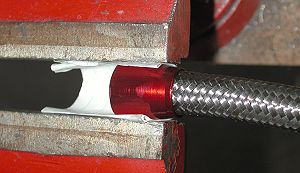
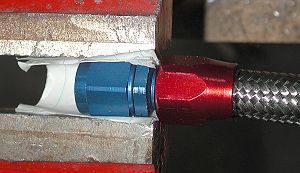
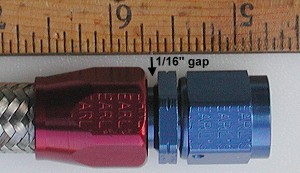
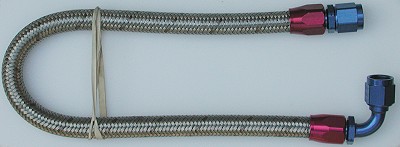
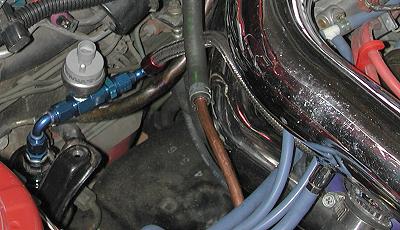
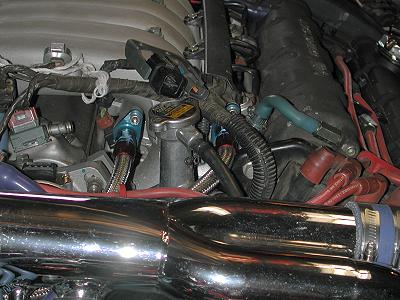
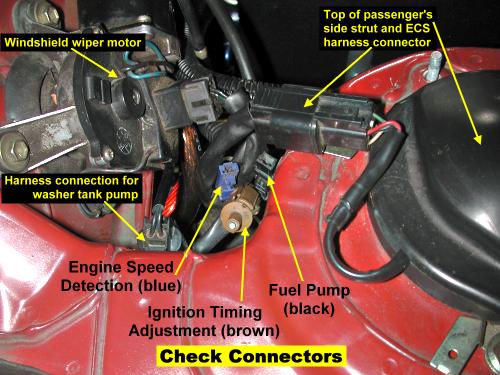
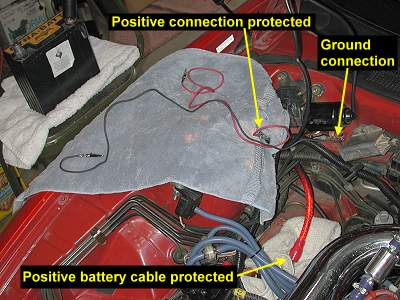
| Back | Home | Forward |